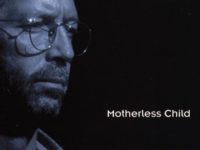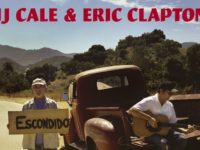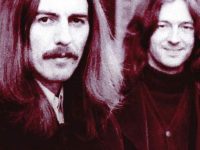The only three-time inductee to the Rock and Roll Hall of Fame (as a solo artist, and as a member of the Yardbirds and Cream), Eric Clapton stands in 2012 as one of the most influential guitarists of his or any other generation. (No matter what Spin magazine says: lolwhut?)
Still, it can be hard to gain a handle on his vast catalog, dating back to 1963 with the Yardbirds, without getting bogged down in the Big Hits. If you’re like us, you can be brought to your knees by the never-ending repetitions of “Layla” — including the original, the unplugged and the Lincoln Center jazz version.
Ready to shoot yourself if you hear “I Shot the Sheriff” one more time? Change the channel every time “Change the World” comes on? That’s where we come in, with a second selection of lesser-known tracks — the biggest hit here is “Badge,” a Cream tune that only went to No. 60 on the Billboard charts — to rekindle interest in Clapton’s back catalog ahead of the release of his forthcoming collaboration with Doyle Bramhall II …
DOUBLE TROUBLE (JUST ONE NIGHT, 1980): No matter the missteps of his studio albums of the period — and, with all due respect to Slowhand, there were many from the late 1970s through the 1980s (the forgettable “Promises,” the even more forgettable Another Ticket, the synthesizer-laden piffle of “She’s Waiting,” the beer-commercial remix of “After Midnight”) until he finally unplugged again in the early 1990s — Eric Clapton always returned to the blues in concert. And, all was forgiven.
Such is certainly the case here, as Clapton takes a eight-minute excursion through Otis Rush’s ageless down-and-out lament, the initial track on the second album of the 1980 live set Just One Night, perhaps most famous for its scuffed up version of “Cocaine.” As Dave Markee walks down his bass, keyboardist Chris Stainton provides a gurgling platform for some of Clapton’s most expressive singing to that point. When he squalls “I can’t even keep decent clothes to wear!,” it’s with a braying sense of injustice. There then follows more than five minutes of vintage Clapton soloing — fiery, contemplative, smart and then scalding.
It’s a tour-de-force moment, and a reminder that whatever you were hearing on the radio from Clapton at the time (“Rock and Roll Heart”? Really?), he could still summon up the ghosts of blues past — with memorable and stunning results. — Nick DeRiso
[SOMETHING ELSE! REWIND: In our first Featured Artist installment, we highlighted standout Eric Clapton tracks like “Had To Cry Today,” “Pilgrim,” “The Core” and others.]
“TULSA TIME” (BACKLESS, 1978): This Danny Flowers-penned country-rocker (also a big hit for Don Williams) closed out the understated roots program that was the Backless album.
I remember reading a snotty review of this album (probably in Rolling Stone), cleverly referring to it as “spineless.” That seems kind of unfair, given the album’s slinky feel. If Ry Cooder had come out with this, they would have given it five stars. In any event, I always dug the swing of this song.
I saw a Clapton show on that tour. He was a hero of ours, but the show suffered from a perhaps too-laid back performance from Clapton, coupled with the insanely stellar warmup act: Muddy Waters. Ouch. — Mark Saleski
“BADGE,” CREAM with GEORGE HARRISON (GOODBYE, 1969): An episodic, riddle-filled song that could have been twice as long, and never gotten old, “Badge” was said to have gotten its title when Eric Clapton misread George Harrison’s musical annotation for the track. (He’d scrawled the word “bridge.”) As their friendship grew, each would appear on one another’s albums — with Clapton guesting on “While My Guitar Gently Weeps” on the Beatles’ self-titled “White Album” in 1968.
This time, it’s Beatle George (hilariously credited, for contractual reasons, on the original pressings as “L’Angelo Misterioso”) who provides the riff — echoing a sound that would propel the Beatles’ “Let It Be” and Ringo’s “It Don’t Come Easy.” Clapton soon joins in with a scorching reply, even as he continues blurting out a series of non sequitur lyrics: “Thinkin’ ’bout the times you drove in my car; thinkin’ that I might have drove you too far. … I told you about the swans, that they living in the park,” the last of which was said to have come from Starr, in a drunken moment of levity.
There is the sense here, far more than on the often ponderous “Guitar Gently Weeps,” of two musical minds bursting with new ideas. Clapton and Harrison both would launch solo career in the following months, with Clapton guesting on George’s All Things Must Pass alongside a group of sidemen who would eventually coalesce into Derek and the Dominos. — Nick Deriso
[SOMETHING ELSE! INTERVIEW: Bobby Whitlock takes us inside the studio with Eric Clapton, Duane Allman and George Harrison — then shares why he left it all behind to get his life together.]
“MOTHERLESS CHILDREN” (461 OCEAN BOULEVARD, 1974): Imagine! A blues song written by someone that goes by the name of Blind Willie! This time the surname is Johnson and the tune is his “Motherless Children.” There have been quite a few versions of his traditional folk-blues composition released over the decades, including a very nice, recent take by Roseanne Cash on her CD, The List.
If you never heard the song before, it’s a lyrically simple but quite moving rumination on the hard times children have growing up without a mother to care for them. While the song has always been easily adapted to country, folk, and blues arrangements, Eric Clapton’s was the first and only time I’ve ever heard it performed as a full-bore, electric rock track.
“Motherless Children” opens Clapton’s classic 461 Ocean Boulevard record and it’s a dandy song from one of his very best albums. He sure did have a knack for taking the old blues works he loves so much and making them his own. Slowhand’s melodic but exuberant guitar riff dominates the arrangement and turns depressing subject matter into a blast that’s compelling at the same time. Clapton deserves all of the accolades sent his way over the decades but to my ears he really outdid himself here with a track that is perfect in every way. (Here’s a video of Johnson’s original.) — Charlie Ricci, from www.Bloggerhythms.com
[SOMETHING ELSE! INTERVIEW: Eric Clapton biographer Chris Welch, a longtime friend, surveys the guitarist’s life and career in the 2012 book ‘Clapton: The Ultimate Illustrated History.’]
“I DON’T WANT TO DISCUSS IT,” with DELANEY AND BONNIE AND FRIENDS (ON TOUR WITH ERIC CLAPTON, 1970): Eric Clapton has described the short time he spent as “just one of the boys in the band” with Delaney and Bonnie’s impressive group of traveling “friends” as one of the most musically rewarding periods of his career. This still didn’t stop him from stealing away the Bramlett’s great rhythm section (bassist Carl Radle and drummer Jim Gordon), for his own Derek and the Dominos project, of course. But that’s another story.
Side One of Delaney and Bonnie and Friends’ classic, but sadly overlooked 1970 live album On Tour With Eric Clapton still stands as one of the most kick-ass sides of full-tilt, southern-fried boogie rock you are ever likely to hear. It also features some of Clapton’s best guitar playing ever, with his short, economical solos standing in sharp contrast to his more overblown work with his two previous groups, Blind Faith and Cream. It’s hard to pick a favorite from this album — the whole thing is pretty damn great. But for me, it basically came down to a toss up between this and album opener “Things Get Better” (which features what may be the single best, one-note solo by any guitarist ever). “I Don’t Want To Discuss It” wins largely on the strength of Clapton’s great guitar solo. The song itself is a screamer though — powered by the booming, high octane funk bottom of Radle and Gordon, a blaring horn section, and the Bramlett’s gospel-fueled vocal exchanges. Clapton’s guitar parts — both in the middle, and again at the end — come in the sort of short, quick jabs that float like a butterfly, and sting like a bee. It’s one of Clapton’s best, yet most deceptively underplayed guitar solos.
Oh, and by the way, if you ever get asked this question during music trivia at your local bar: yes, those are Bob Dylan’s feet sticking out of the car window on the album cover. — Glen Boyd
[amazon_enhanced asin=”B000WTXDR6″ container=”” container_class=”” price=”All” background_color=”FFFFFF” link_color=”000000″ text_color=”0000FF” /] [amazon_enhanced asin=”B000002G8J” container=”” container_class=”” price=”All” background_color=”FFFFFF” link_color=”000000″ text_color=”0000FF” /] [amazon_enhanced asin=”B0000067L4″ container=”” container_class=”” price=”All” background_color=”FFFFFF” link_color=”000000″ text_color=”0000FF” /] [amazon_enhanced asin=”B000002G89″ container=”” container_class=”” price=”All” background_color=”FFFFFF” link_color=”000000″ text_color=”0000FF” /] [amazon_enhanced asin=”B000002IAS” container=”” container_class=”” price=”All” background_color=”FFFFFF” link_color=”000000″ text_color=”0000FF” /]
- Ernesto Cervini’s Turboprop, “When I Fall” (2024): Video premiere - March 15, 2024
- Disaster Pony,“Dead Neon & The Noon Sun” from ‘Disaster Pony’ (2024): Video premiere - February 27, 2024
- Christopher Hoffman, “Farewell Forever” from ‘Vision Is The Identity’ (2024): Streaming premiere - February 19, 2024




